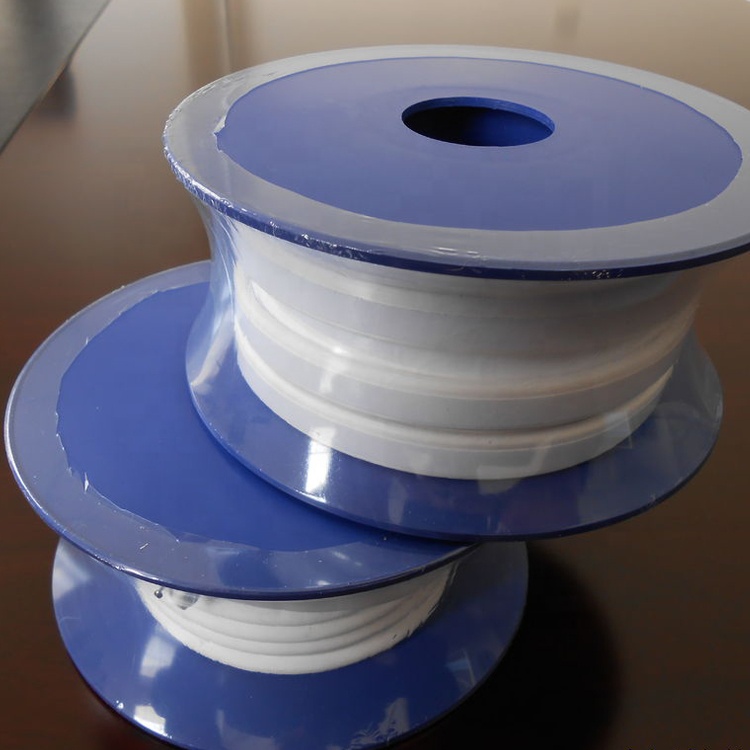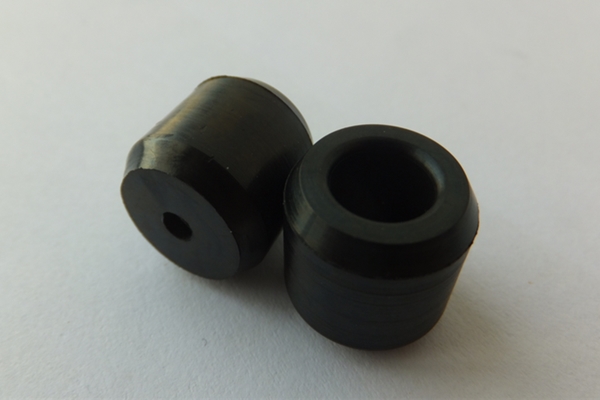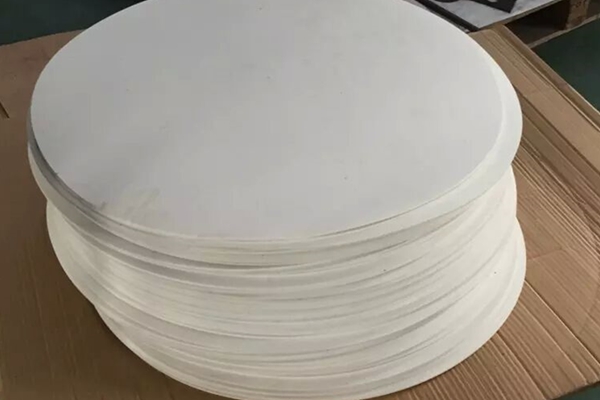The PTFE Bonded EPDM Gasket is mainly designed to address issues in the existing technology, such as poor elasticity and strength when using single PTFE material for gasket manufacturing. Additionally, the combination of rubber and PTFE often produces poor adhesion, leading to suboptimal performance under high pressure and demanding conditions. Furthermore, the gasket’s smooth surface and inadequate sealing performance are also challenges to be resolved. The production process of this invention involves the following steps: rubber compounding, pre-press forming, machining of PTFE sheets using machine tools to create grooves, surface activation treatment of the rubber-to-PTFE bonding area, adhesive application for bonding rubber sheets to PTFE shells, vulcanization molding, and edge finishing to create the final product. Gaskets produced using this process include a rubber sheet with a PTFE shell enveloping its surface, featuring several upward-protruding grooves on the PTFE shell.
Background Technology: In the industrial sector, sealing in pipelines, valves, containers, and other equipment commonly utilizes gaskets and seals made from single fluoroplastics (such as PTFE, PFA) or materials like asbestos rubber sheets and silicone rubber. These materials exhibit low strength and are prone to aging. An approach to improving the creep resistance of PTFE gaskets involves creating PTFE sheets with enhanced creep resistance and subsequently manufacturing sealing gaskets from these sheets. Similarly, improved creep-resistant PTFE thin sheets are manufactured using textile fiber cloth as a skeleton, and these thin sheets are cut into specified sizes to overlap and create composite PTFE gaskets. However, these methods often result in gaskets with poor elasticity and strength when using single PTFE material, or when combining rubber and PTFE without proper adhesion, rendering them unsuitable for high-pressure and demanding conditions. Additionally, these gaskets exhibit a smooth surface and inadequate sealing performance.
The PTFE Bonded EPDM Gasket effectively addresses the shortcomings of existing methods. It comprises a rubber sheet with a PTFE shell covering its surface, featuring several upward-protruding grooves on the PTFE shell. When the flange is tightened, these grooves flatten out, enveloping the rubber sheet tightly and conforming to both flange surfaces. These grooves function as multiple labyrinth seals, maintaining higher sealing pressure ratios, enabling bolts to operate under low loads, and providing resistance to thermal cycling. The rubber component can consist of a blend of 3 parts fluoroelastomer and 1 part nitrile rubber. The PTFE shell features an edge surrounding the inner hole of the rubber sheet, ensuring tighter adhesion. This design reduces cold flow and blowout resistance, enhancing gasket strength and rigidity while preventing displacement of the covering material. The gasket’s production process involves rubber compounding, pre-press forming, machining of PTFE sheets, surface activation treatment of the rubber-to-PTFE bonding area, adhesive application for bonding rubber sheets to PTFE shells, vulcanization molding, and edge finishing. The adhesive used can be commercially available Chemlok 607.
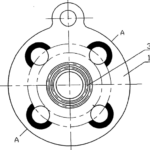
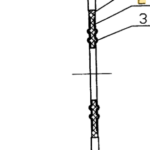
Figure Description: Figure 1 is a schematic diagram of the structure of the present invention. Figure 2 is a schematic diagram of the A-A cross-sectional structure of Figure 1.
Detailed production processes for this product can be achieved through the following three manufacturing methods:
Method 1: Steps for the Production Method of PTFE Bonded EPDM Gaskets: a. Prepare the rubber compound by blending, with the composition and mass percentages as follows: 70% fluororubber, 1.7% vulcanizing agent, 13.7% acid absorbent, 13.7% reinforcing agent, and the remainder being processing aids. b. Perform pre-press forming at temperatures of 80 to 90°C and pressures of 15 to 30 MPa. c. Use machine tools to cut and create grooves in the PTFE gaskets. d. Apply sodium naphthalene treatment agent to activate the bonding area between PTFE and rubber. The sodium naphthalene treatment agent consists of naphthalene and sodium dissolved in a sufficient quantity of tetrahydrofuran, with a molar ratio of 1:1. e. Apply adhesive and bond the rubber sheet (1) to the PTFE outer shell (2). f. Carry out vulcanization molding under conditions of 145 to 155°C and pressures of 5 to 8 MPa. g. Perform edge finishing to complete the production of this product.
The PTFE Bonded EPDM Gasket produced using this method, as depicted in Figure 1 and Figure 2, features a circular rubber sheet (1) with a circular hole (4). The rubber sheet has an inner hole enveloped by a PTFE outer shell (2), and an edge at the inner hole of the rubber sheet. The PTFE shell (2) also exhibits two upward-protruding grooves (3).
The produced PTFE Bonded EPDM Gasket has a density of 1.7±0.2 g/cm³ and demonstrates a compression rate of ≥20%, a rebound rate of ≥35%, a stress relaxation rate of ≤30%, a leakage rate of ≤1×10⁻⁴ cm³/s, and it can be utilized within a temperature range of 50 to 260°C. Furthermore, it possesses a tensile strength of >12 MPa, an elongation at break of >150%, and a hardness of 70±5 HA. During use, when the flange is tightened, the concentric circular sealing grooves flatten, tightly encompassing the rubber sheet, thereby offering effective sealing under low bolt loads and resistance to thermal cycling.
Method 2: Steps for the Production Method of PTFE Bonded EPDM Gasket (with slight variations in materials and properties).
Method 3: Steps for the Production Method of PTFE Bonded EPDM Gasket (with slight variations in materials and properties).
In conclusion, the invention presents three methods for producing PTFE Bonded EPDM Gaskets. These gaskets combine rubber and PTFE to provide improved elasticity, strength, and sealing performance. The production processes ensure the proper integration of materials to meet demanding operational conditions. These innovative gaskets offer enhanced solutions compared to conventional ones and are suited for various industrial applications


